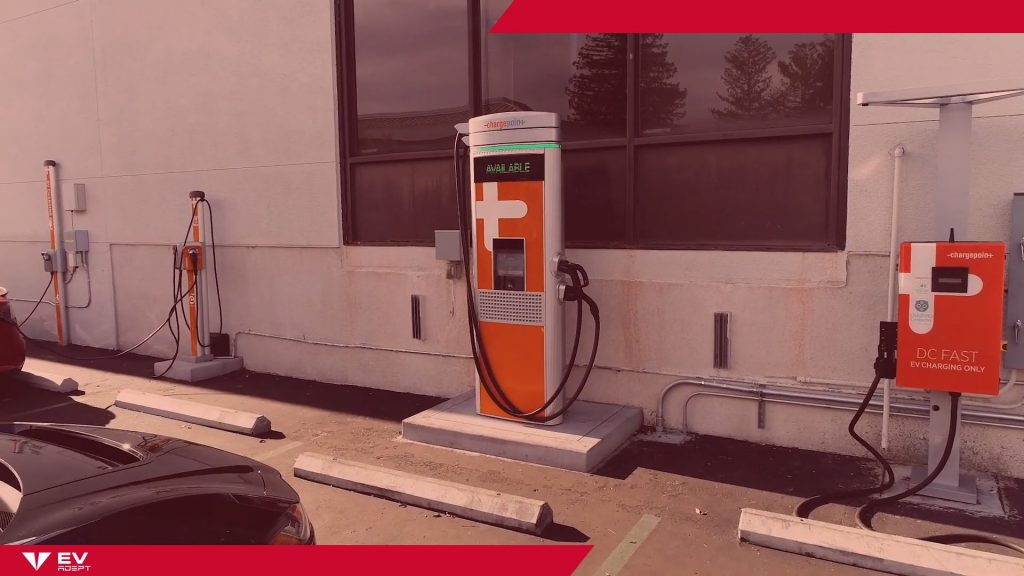What’s the difference between DC and AC?
Direct current and alternating current are two forms of electricity supply. Comparative information about the differences is shown below.
DC Charging
- Batteries in portable electronic gadgets are used to store it
- Is constant
- Current/Direct Power
- Electric vehicles are charged at rapid rates using this method
AC Charging
- Alternating Current/Power
- Long-distance transmission may be economical
- Electric cars may be charged at varying speeds
- Available on power grid
- Converted to DC by the car
AC charging
The most popular way to charge electric cars is to use an 5-15 electrical outlet. In the vehicle, the electricity is converted back to direct current before being fed to the battery. The charging rate depends on the power of the home charging station and the inverter’s ability to convert the current from AC to DC.
The required capacity for AC chargers is 16 to 80 amps. In this case, the connection limit through the sockets is 48 amperes. That’s what you can get with a NEMA 14-50 battery charger for your electric car.
The first thing you need to decide is if your car needs a permanent or portable charger. If it is the latter, then we recommend one of these best portable EV chargers for sale on the market. It will do the job and keep your electric vehicle running smoothly.
AC EVSE are the most frequently seen chargers because of their lower costs (production, installation, and operation), which make them more popular for everyday charging.
DC charging
Charging stations for electric vehicles that charge with direct current are called fast charging stations. The current is converted before it reaches the inverter in the vehicle. After conversion, the energy is transferred directly to the vehicle’s battery and does not pass through the inverter.
A DC system consumes a significant amount of energy from the grid. Because of this, its expenses (production, installation, and operation) are quite high, resulting in increased charging costs. However, because it typically allows for quicker charging, it is the prefered way to charge your vehicle quickly while on long-distance journeys.
When it comes to charging Chevrolet Equinox EV, a DC system can be the ideal solution for long-distance journeys. Choosing a DC system can help you save time and ensure that your Chevy Equinox EV stays charged during your travels.

Other features
The AC power supplied by the grid is constant.
When charging portable electronics, the power must be changed from AC to DC. A converter is used for this.
A converter is generally inserted inside the plug in the case of daily portable electronics.
This converter is installed inside the vehicle in the case of electric vehicles.
This converter is built-in to the charger in the case of DC chargers. The conversion is handled by the converter inside the charger in this situation. As a result, DC chargers tend to be more bulky than their AC counterparts.
When charging an electric vehicle, the energy must always be converted from AC to DC, regardless of the technical differences between AC and DC charging.
Charging costs
You can use a charging calculator, developed by us, with its help you will know which way of charging for an EV is cheaper.
Regardless of the charging method, power costs (including manufacturing, installation, and operation) will generally rise as a chargepoint’s capacity increases.
This doesn’t take the charging speed of your car into account. So, if you’re connected to a high output AC chargepoint but your vehicle can’t charge on high capacity (the most common EV limit is 48 amps.), you can end up spending an exorbitant amount of money for little energy.
Which one is better?
Among surveys of EV Adept customers, most prefer to use home charging in their daily lives. Fast charging is mainly used when traveling by electric car.
If you need a quick recharge to continue your journey across the country, you’ll almost always choose DC charging. AC charging will be the method to charge your vehicle for any other use case.
Read more: Is fast DC charging bad for your electric car?
I’ve been using a standard home outlet for my EV, and it’s convenient but slow. Considering upgrading to a dedicated home EV charger. Anyone else made this switch? How much faster is the charging, really?
Upgraded last year, and the difference is night and day. My car charges about 4x faster with the home EV charger. Definitely worth the investment if you’re a regular EV user.
I rely mostly on DC fast charging during my frequent road trips. It’s a lifesaver when you need a quick boost to continue your journey. Any tips on finding reliable fast charging stations on less-traveled routes?
I use a couple of apps to locate fast chargers along my routes. Also, planning your stops ahead helps. Some less popular areas are getting more stations, but it’s still hit or miss.
Been pondering the environmental impact of fast charging vs. regular home charging. Does fast charging have a larger carbon footprint? Trying to make the most eco-friendly choices for my daily commute.
While fast charging stations may consume more power quickly, their overall carbon footprint isn’t necessarily higher. It depends on the source of electricity. Solar-powered charging stations, for example, are quite eco-friendly.
Just curious, why can’t we use regular sockets for continuous high-power EV charging? Had a scare when my socket overheated during an emergency charge.
Standard sockets aren’t designed for the prolonged high power draw that EV charging demands. This can lead to overheating and even fire hazards. Always better to use a dedicated EV charging solution for safety.